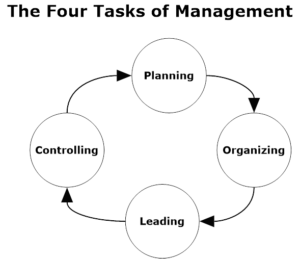
In this post, I return to looking at Key Performance Indicators in a higher ed setting. While this gentle approach may seem innocuous to most individuals outside of the insular world of higher education, it is sure to raise the hackles of many of my higher ed colleagues. They will accuse me of trying to sneak the wolf (management theory) dressed in sheep clothing into the sheepfold (the university) through a back door.

I am going to be bold enough to take that next step and publicly declare that I do not see management theory as a wolf trying to devour the sheep. I believe it can be viewed more like a sheepdog, herding the sheep to safety through the one and only door of the sheepfold. The sheepdog then lies down at that entrance and guards the fold and the sheep against all predators.

Many of the most familiar performance indicators are business-oriented outcome measurements. How many widgets were produced? How much did it cost to produce each widget? How much income did the firm make from the sale of those widgets? Higher education for years has claimed that since education is a process, we shouldn’t focus on or speak of educational outcomes, especially financial ones.
As I noted in my post K PI Part III, A University Should Be Managed as If It Were a Business Milton Greenberg in his seminal essay “The University Is Not a Business (and Other Fantasies)” published in EDUCAUSE Review, vol. 39, no. 2 (March/April 2004), argues forcefully and persuasively that a university should be managed as if it were a business.
Very early in his essay, Greenberg proclaims, “ Presumably, a ‘business’ involves the hierarchical and orderly management of people, property, productivity, and finance for profit.” The primary counterarguments of academicians to Greenberg’s position hinge on three concepts in this sentence.

In this post, I will begin to address the first of these counterarguments, the concept of “hierarchical management.” To understand the problems created by the use of the term hierarchical management we need to have some familiarity with the difference between the general concepts of governance and management. We also need to look at the typical governance structures of colleges and universities, and the usual management formats of colleges and universities. These two topics are too involved to address in depth in this one blog post. I will take each of them up in subsequent posts. This idea will require more in-depth excavation.

The origins of the two terms automatically set the stage for a huge battle in the academy over their applicability to higher education. The term governance historically came from the disciplines of social and political sciences. Without digging into the finer points of the definition, this ancestry would usually imply that it must primarily deal with relationships.
Governance has many definitions, but most center on two related ideas. The first idea concerns how decisions are made. What are the processes of decision making within the organization? Who has a voice in making decisions? The second changes the focus to how those decisions are implemented. How is power or control exercised within the organization? What is the locus of authority within the organization?

On the other hand, the term management originated within the realm of the business world and was then fine-tuned within the disciplines of economics and business. This ancestry automatically makes it suspect to the academy, which believes that given its origin, it must naturally deal with productivity and finances. These concepts are antithetical to many citizens of the academy.

Most modern definitions of management view it as a process of four interwoven tasks. The first of these tasks is Planning, the selection of appropriate organizational goals and the best array of actions to achieve those goals. The second task is Organizing, the establishment of assignments and an aura of authority that encourage and allow people to work together to achieve the organization’s goals.
The third task is Leading which involves motivating, coordinating, inspiring and energizing individuals and groups to work together to achieve the organization’s goals. The fourth task is Controlling which has two primary aspects. The first is assessing situations by establishing accurate systems of measuring and monitoring how well the organization has achieved its goals. The second is redirecting the course of operations when it is apparent that the organization is not achieving its goals.
Modern universities consist of four major groups of individuals. These groups are students, faculty, administration, and governing boards. In subsequent posts, we will examine the historical development of these groups, their relationships with each other, and their roles in governance and management.
From the definitions of governance and management, we see much common ground with one major difference. The major difference is their primary focus. Governance focuses on relationships, while management focuses on tasks. In subsequent posts, I will deal with the idea of shared governance and hierarchical management. I hope to convince you that the two concepts are not mutually exclusive.
To get to the point of being able to discuss these topics, my next post will be this Friday, March 29. It will be a short history of the development of the modern university and the four major groups of individuals that comprise the university.
Leave a Reply